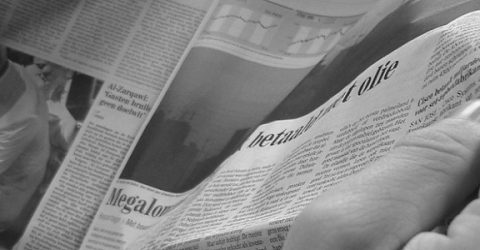How can we spot fake news?
In an evolving media landscape, we all need to tread carefully.

The internet is constantly evolving and refining its output, and regrettably, the same is true for the phenomenon of fake news.
In the last few years, there’s been a subtle but discernible shift away from text-based websites towards visual content like videos and memes.
The people behind fake content have also moved with the times. A recent report shows their messages are now routinely spread via the manipulation of pictures and film footage.
Facebook is still the preferred place to plant fake content, though Instagram and YouTube (the world’s second biggest search engine, behind parent company Google) aren’t far behind.
Fake it ’til you make it
The term ‘fake news’ refers to the deliberate spreading of false information or ideas, often via social media or viral content.
It may be created by individuals or huge organisations alike, and it’s designed to be attention-grabbing and easily shared.
Automated bots and (paid) human trolls are sometimes involved.
Research shows false political information spreads much faster than other fake content.
As a result, many people are unsure which, if any, news sources they can trust. Even the BBC has occasionally been tricked into publishing fake stories, albeit of minor significance.
Why use pictures?
Social media platforms use algorithms to spot and block content they believe to be maliciously incorrect.
This works with text, but images and videos are much harder to check automatically.
Combined with the shareability of pictures, the ability to avoid detection has significant benefits for the fakers.
What’s more, their fakes can be really good. The recent viral popularity of Chinese ‘deep fake’ app Zao has shown just how easy it is to make convincing (yet false) videos.
Some people are worried Zao itself will contribute to the production of falsified reportage.
Other common techniques include the recycling of old or irrelevant images, claiming they offer new depictions of an unrelated event.
Fakers also use apps to change videos, since it’s becoming incredibly easy to edit people in or out of a film.
Photo editing suites like Photoshop have been around for years, making the manipulation of individual frames fairly straightforward.
Spot the difference
These are our tips for spotting a fake film or image:
Bear in mind some fake news is based on real events, but presents the details incorrectly through selective editing.
Some of it is intended to be funny, and might have originated from satirical sources like Private Eye or The Onion.
You can also do your own fact-checking at a trusted site like snopes.com or fullfact.org.
This might seem like a great deal of effort, but it’s worthwhile since fake news influences how we vote, how we view other people and even how we behave.
Access to genuine information is far too important to be left to social media companies, who live and die by user volumes and activity levels rather than accuracy or integrity.






